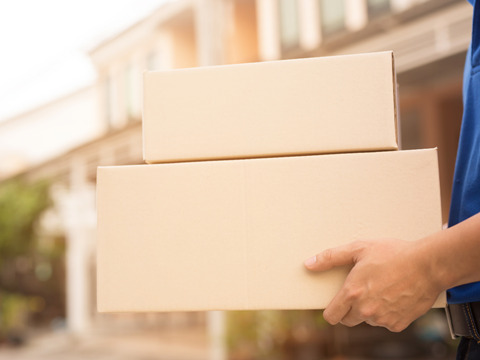
Global e-commerce has surged from $3.6 trillion in 2019 to over $6 trillion in 2024—and it’s projected to hit $8 trillion by 2028. Behind every next-day delivery and effortless return lies a supply chain under intense pressure to deliver faster, cheaper, and more sustainably.
Packaging has moved to centre stage. It must now enable speed, minimize waste, reduce costs, and elevate customer experience, while keeping up with rapid change.
Diana Neto, E-Commerce Business Development Manager EU at H.B. Fuller, tells us more in this edition of our In Conversation With… series.
How has the e-commerce supply chain evolved in recent years—and what impact has this had on packaging?
The exponential growth of e-commerce and rising consumer expectations have drastically shifted how supply chains operate.
Today’s customers expect not only convenience and speed, but also seamless returns and sustainable practices. This puts pressure on logistics to be faster, more efficient, and error-proof, even under an increasingly complex environment. At the same time, packaging is under scrutiny for its environmental impact.
E-commerce packaging is now expected to speed up fulfillment, simplify reverse logistics, and align with circular economy goals - all while remaining cost-effective.
What are the biggest packaging challenges e-commerce retailers face today across the supply chain?
Customers’ expectations for same-day delivery put speed as priority, but labour shortages limit fulfilment capabilities, especially during demand peaks.
Add the demand volatility and costing pressure, and scalable operations become critical. These factors are driving increasingly automated operations.
According to a study conducted by Stanford University, process automation can lead to a 50% reduction in labour costs and a 30% improvement in operational efficiency, while minimizing the error during the packing process - which is particularly important if we consider that the return rates are estimated between 20 and 30%, adding more complexity (and costs) to logistics.
With the adoption of automated packing systems, how are material requirements - especially adhesives - evolving? And how are they supporting retailers and 3PLs in meeting modern e-commerce demands?
As operations scale up, priorities shift from manual flexibility to automation readiness.
In the case of adhesives, while manual packers prioritize easy peel–and-seal adhesives, automated systems demand precision, speed, and application consistency.
In automated processes, adhesives must meet fast setting times to avoid bottlenecks and allow the machine to run at full speed; clean machinability to reduce downtime and preserve equipment (reducing maintenance costs); and preferably, low-temperature application to ensure operator safety and reduce energy use.
The wrong adhesive doesn’t just slow down operation - it quietly drains efficiency, drives up costs, and sabotages sustainability goals.

How can H.B. Fuller help retailers adapt and succeed in this environment?
At H.B. Fuller, we help e-commerce businesses future-proof their packaging through three key strengths:
First, we offer global supply consistency. Retailers with operations across regions need partners who ensure consistent product quality and service globally, and simplified supply chains.
Second, we provide a wide range of adhesive technologies—from hot melts, heat-sealing coatings, to tapes—that align with automation, sustainability goals and customer-centered packaging designs.
And third, we act as technical partners, offering everything from lab testing, repulpability assessment, to line optimization, helping our customers get the most out of their systems.
It’s about more than supplying adhesives—it’s about enabling performance.
As the pressure for speed, sustainability, and cost control intensifies, what packaging capability must tomorrow’s leading e-commerce retailers have?
Adaptability. In a fast-changing environment shaped by shifting consumer behavior, evolving tech, and new regulations, retailers who can quickly and intelligently adapt their packaging systems will lead. As we look to the future, how might the integration of AI, IoT, and sustainable materials redefine packaging systems? Probably packaging will be more predictive and more software than material defined.
Retailers that treat packaging as a strategic asset will thrive in the face of complexity.
To learn more about H.B. Fuller’s services for e-commerce packaging solutions, click here.

















No comments yet